For the Dispatches column, Marilena Borriello wonders if the exhibition Unbound: Performance as Rupture (on view at the Julia Stoschek Foundation from September 14, 2023–July 28, 2024) advances old debates around the nature of performance, documentation, and the digital.
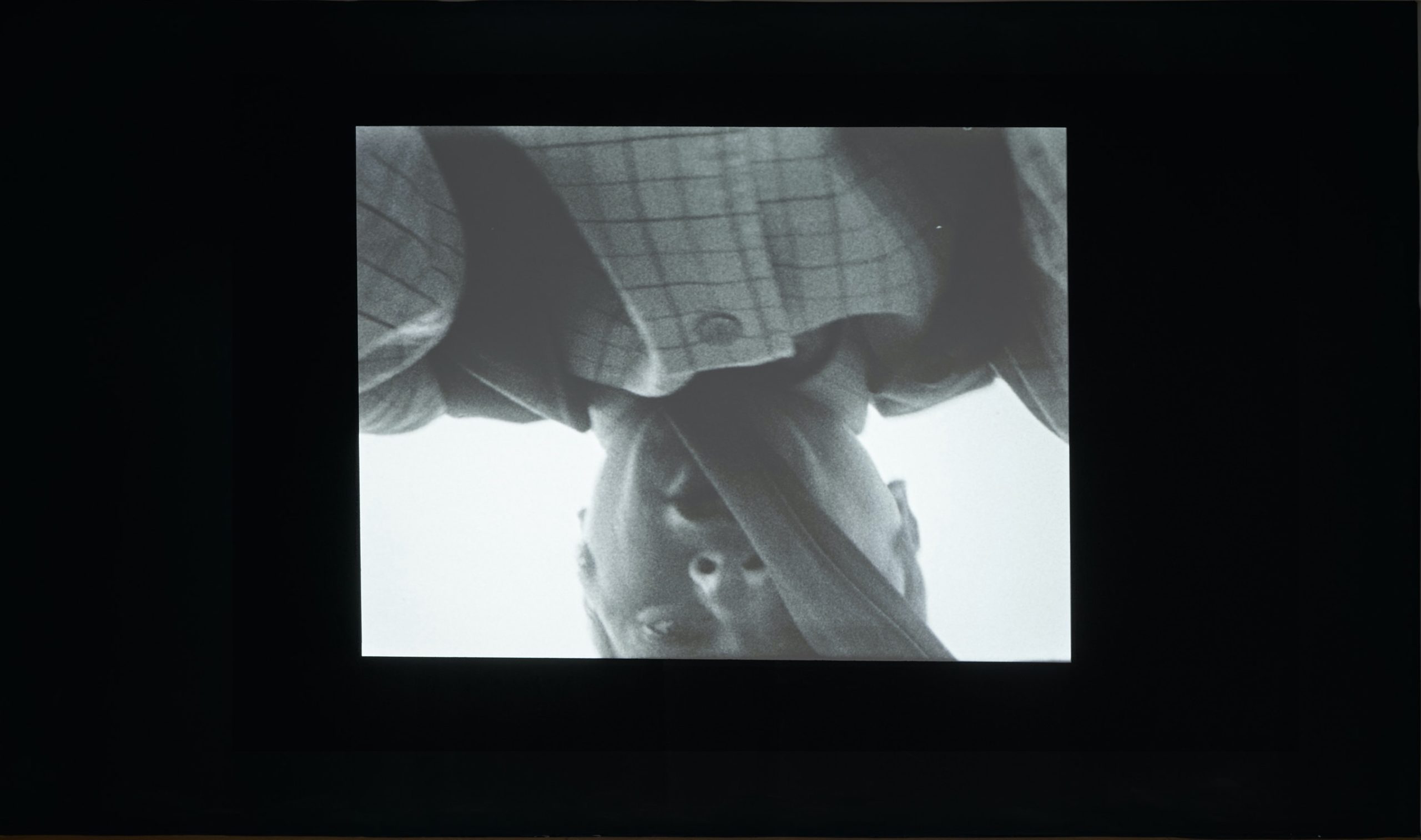
Lutz Mommartz, Selbstschüsse, 1967. 16mm film transferred to video, black and white, sound, 6:16 min. Installation view, Unbound: Performance as Rupture, Julia Stoschek Foundation, Berlin, September 14, 2023–July 28, 2024. Photo: Alwin Lay.
In performance studies, disappearance and irreproducibility are seminal concepts. They arise from the idea that the essence of performance, its ontology, is what critic Peggy Phelan calls “representation without reproduction.” In simpler terms, a performance’s fleeting nature lends it a pure, untainted quality; once concluded, the performance ceases to exist.
In recent decades, this assumption has fueled a passionate debate between those who argue that, due to its pristine nature, performance cannot be replicated or documented—Phelan posits that “the life of performance is solely in the present”—and those who, conversely, contend that performance can be preserved and documented, such as Philip Auslander, who argues that documents like photographs are what enliven and raise an event to the status of art.
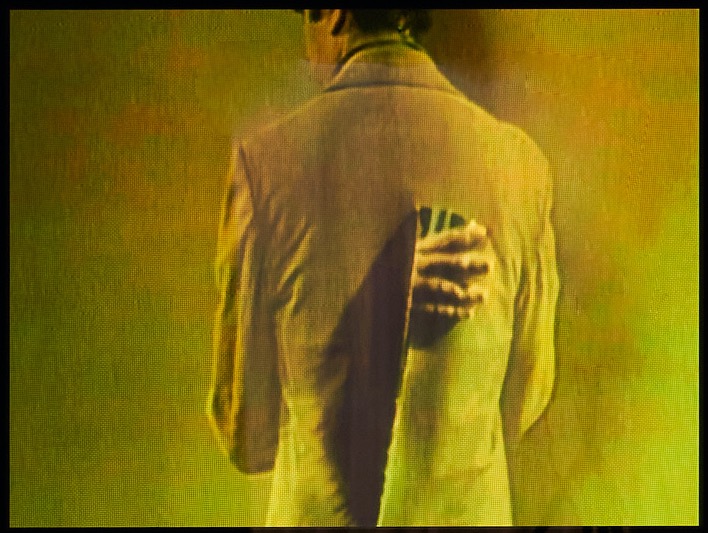
Peter Campus, Three Transitions, 1973. Video, color, sound, 4:53 min. Installation view, Unbound: Performance as Rupture, Julia Stoschek Foundation, Berlin, September 14, 2023–July 28, 2024. Photo: Alwin Lay.
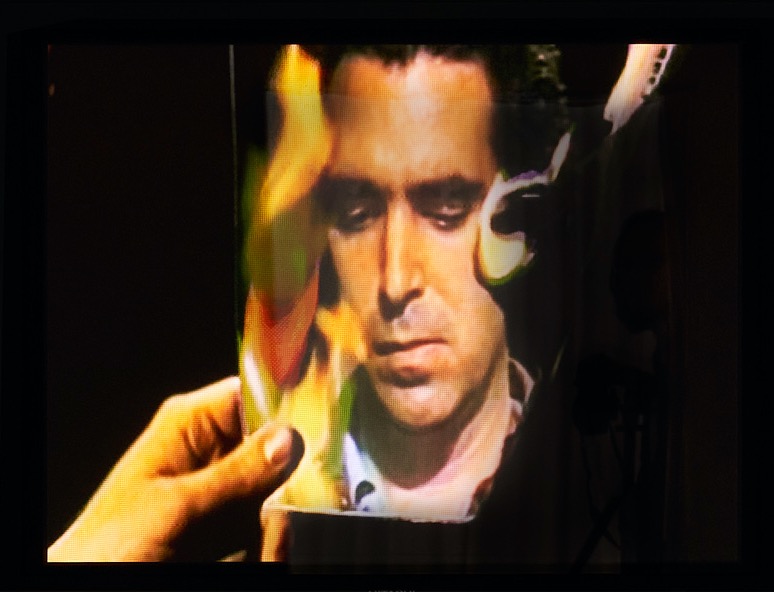
Peter Campus, Three Transitions, 1973. Video, color, sound, 4:53 min. Installation view, Unbound: Performance as Rupture, Julia Stoschek Foundation, Berlin, September 14, 2023–July 28, 2024. Photo: Alwin Lay.
Unbound: Performance as Rupture, an exhibition curated by Lisa Long with Line Ajan at the Julia Stoschek Foundation, enriches this discourse by implicitly reflecting the essence of performance in the digital age. Indeed, the invective of the show lies not so much in delineating the relationship between performance and its documentation but rather in how digital technology troubles the source of the genre’s presumed ontological purity: irreproducibility. Arguably, the works of the 36 exhibited artists have a common denominator in a concept of identity understood as a profound exploration of social roles, cultural gender, colonial legacy, transnationalism, and stereotypes. However, the underlying question justifying the co-presence of these works revolves around whether performance can maintain its subversive potential when mediated by documents.
The core of the exhibition is encapsulated in Three Transitions (1973), a piece created by Peter Campus in collaboration with Boston’s WGBH-TV. Through the artist’s nonsensical actions, such as rubbing his face and setting his reflection on fire, using off-camera monitors and chromakey technology, he unveils perceptual tricks played on the viewer. In the first “transition,” for instance, the artist uses his image projected from behind, torn and traversed by himself, to imply a disconnection between the outer and inner psychological dimensions. Campus challenges the medium specificity of video by delving into cognitive psychology, identity, and existentialist concepts. Rather than serving as mere documentary material, it functions as a disruptive element, eroding the assumed boundaries between live performance and documentation, thus questioning both “purists” and “documentarians.”

Akeem Smith, Social Cohesiveness, 2020. Three-channel video installation, color, sound, 32:53 min. Installation view, Unbound: Performance as Rupture, Julia Stoschek Foundation, Berlin, September 14, 2023–July 28, 2024. Photo: Alwin Lay.
The exhibited works range from 1967 to 2023. In almost all of them, the supposed reliability of technology to faithfully document reality—that is, technological indexicality—comes apart. In Selbstschüsse (Self Shots, 1967), Lutz Mommartz demonstrates a performative approach to filmmaking. By directing the lens at himself and engaging in playful interactions, Mommartz approaches the camera less as a recording tool, more as a partner. This shift in function invites a change in the viewer’s perception. Liberated from a specific intellectual direction or viewpoint, their gaze might be completely engaged by what the camera captures, even become an integral part of the work.
The exhibition thus demonstrates that a newly expanded concept of video can enhance rather than compromise the medium’s essence, in particular through redefinitions of the artwork’s relationship with its beholder. In Free, White and 21 (1980) by Howardena Pindell and Social Cohesiveness (2020) by Akeem Smith, this transformative shift occurs through the undoing of the singular and linear temporality of performance (crucial in Phelan’s thinking), inviting the viewer to reconnect a network of syncopated moments. In her video, Pindell—portraying all roles—orchestrates a rhythmic, syncopated dialogue between herself and a caricature of a white woman who ruthlessly challenges the truthfulness of the artist’s racist and sexist experiences. Pindell’s cross-racial embodiment and her exploration of time as a fluid concept, moving forward and backward, underscores the video’s primary feature: racism as trauma. Meanwhile, in Smith’s piece, three large screens display the juxtaposition and alternation of VHS footage, family photographs documenting dancehall parties in Jamaica from the 1990s to the 2000s, newsreel footage of Princess Margaret visiting Jamaica in 1955, and images from a party in Kingston on September 11, 2001. As Smith blends visuals from different eras and situations, interweaving a multiplicity of narratives, he models a decentralized version of history. By undoing the linearity of time, both pieces encourage us to connect the events, consider the pauses and absences between them, and reverse our gaze on history.
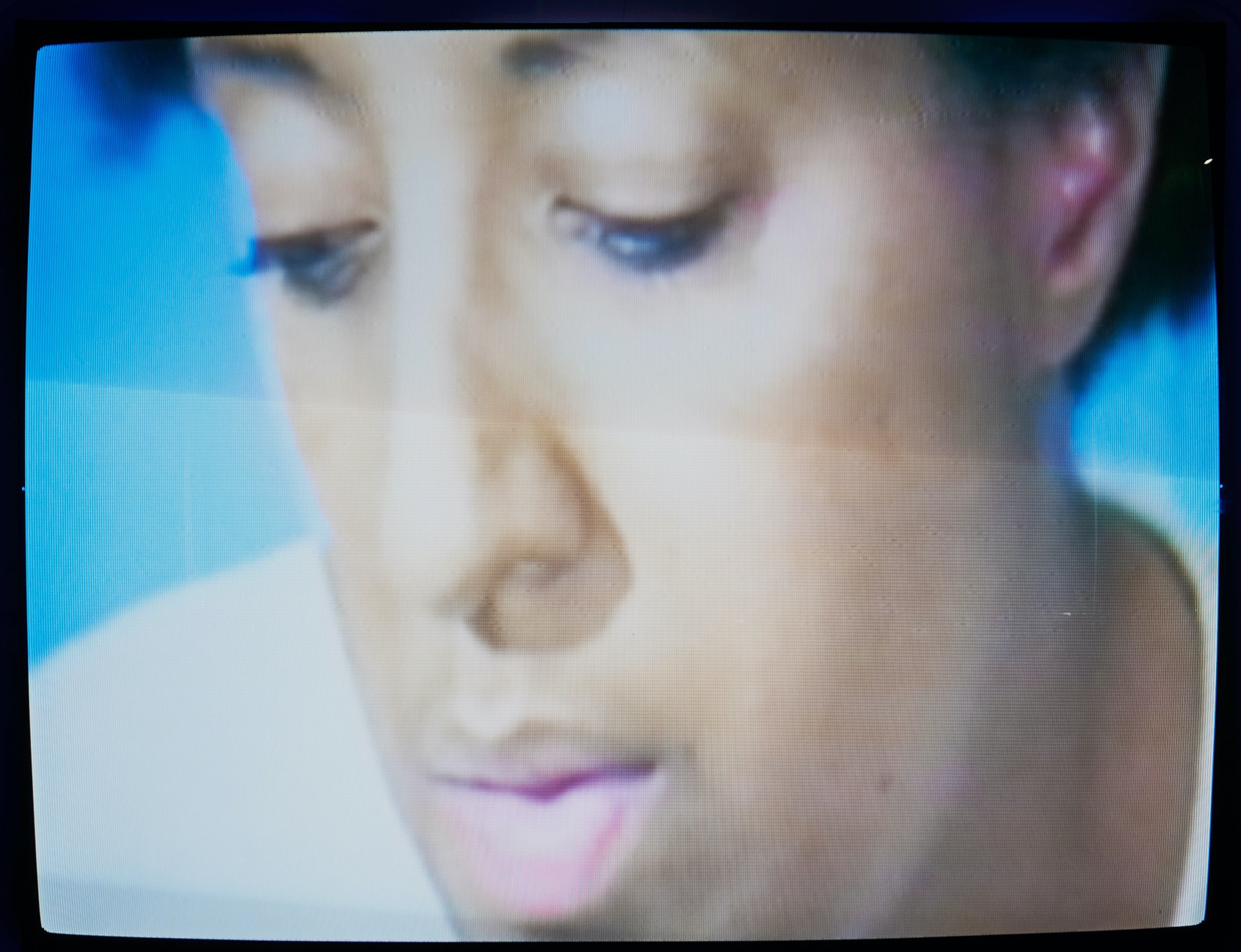
Howardena Pindell, Free, White and 21, 1980. U-matic video, color, sound, 12:15 min. Installation view, Unbound: Performance as Rupture, Julia Stoschek Foundation, Berlin, September 14, 2023–July 28, 2024. Photo: Alwin Lay.
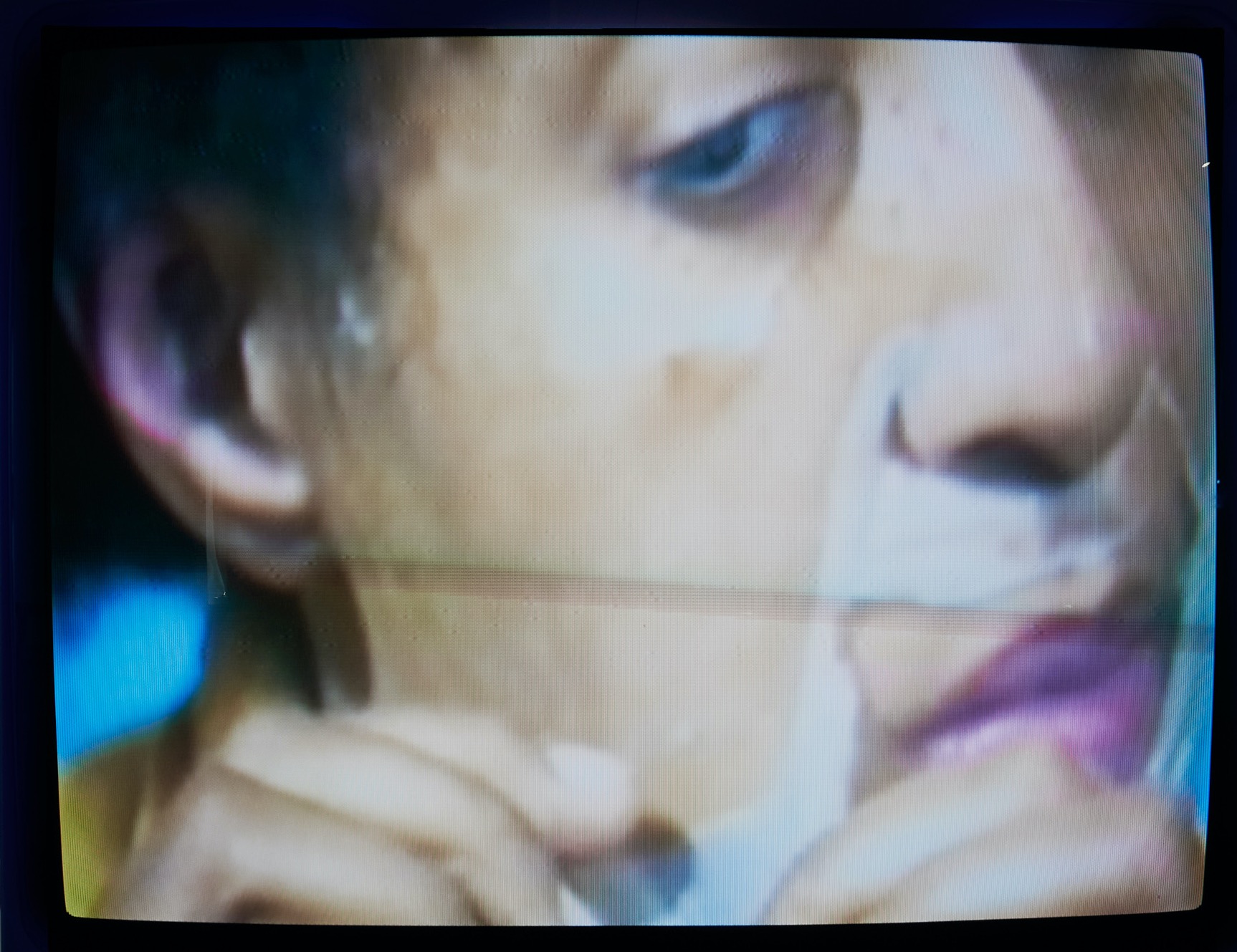
Howardena Pindell, Free, White and 21, 1980. U-matic video, color, sound, 12:15 min. Installation view, Unbound: Performance as Rupture, Julia Stoschek Foundation, Berlin, September 14, 2023–July 28, 2024. Photo: Alwin Lay.
Unbound does not resolve the debate surrounding the relationship between performance and documentation. Rather, it deserves recognition for expanding the understanding of performance to include points raised by digital technology. Firstly, the definition of a performer now extends beyond human actors, encompassing virtual characters, algorithms, moving images, or even inanimate objects manipulated by technology. Secondly, digital elements can significantly alter how the audience engages with performance, blurring the boundaries between live and recorded elements and providing new modes of interaction and perception.
Critic and poet Meiling Cheng posits that performance emerges from the interaction of five key elements: time, space, action, performer, and audience. In other words, these elements’ dynamic and performative interplay culminates in an experimental event, regardless of the specificity of the medium (video, for example) and its documentary function. In light of this, considering performance as an ever-evolving art form necessitates a paradigm shift. This entails a departure from the modernist interest in a work’s intrinsic qualities towards exploring the performative dynamics that enable an interactive dialogue between the work and the observer. The old models, as represented by the Phelan-Auslander debate, may not be sufficient to capture the complexity of new performative languages. Indeed, digital media transcends its role as a mere document of performance; instead, it can itself constitute a vital performative event. X

Marilena Borriello is an art writer and researcher based in Sweden.